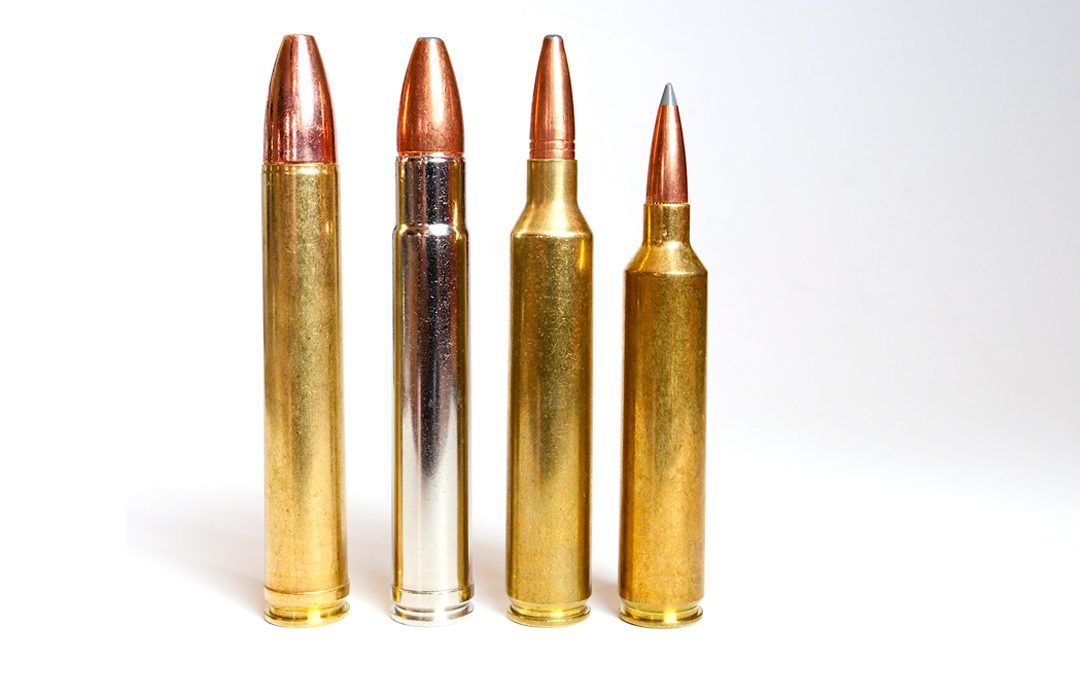Heavy bullets win over lighter, faster bullets in our recent survey. I asked if you preferred larger calibers and heavier, slower moving bullets or smaller diameter, faster projectiles for hunting. In other words, do you think big bullets at lower velocities kill more efficiently than narrower bullets at much higher velocities? The old “mass versus speed” debate. I also conducted a survey of outfitters on BookYourHunt.com with this same question.
Surprise! Slow, Heavy Bullets Win
Surprisingly, the majority (58%) went big and slow, buoyed by experience but dragged down by some common misconceptions. Or at least some fuzzy concepts about energy and how bullets terminate game, as we’ll see farther along in this article.
I find these results surprising because smaller calibers, particularly the 6.5 Creedmoor, are dominating sales. But this involves a “trendy phenomenon.” The 6.5 Creedmoor craze (and now the 6mm Creedmoor craze) has more to do with target, competition, and long range shooting than hunting. This little round with the fast twist rifling for stabilizing long, highly efficient bullets appeared just as the sniper craze hit. Only later did shooters begin trying it on game. To no 6.5x55mm Swede shooter’s surprise, the Creedmoor proved deadly on whitetails, mule deer and similar sized animals, but also elk, caribou, moose, and bears — species the 6.5×55 has been killing for more than a century.
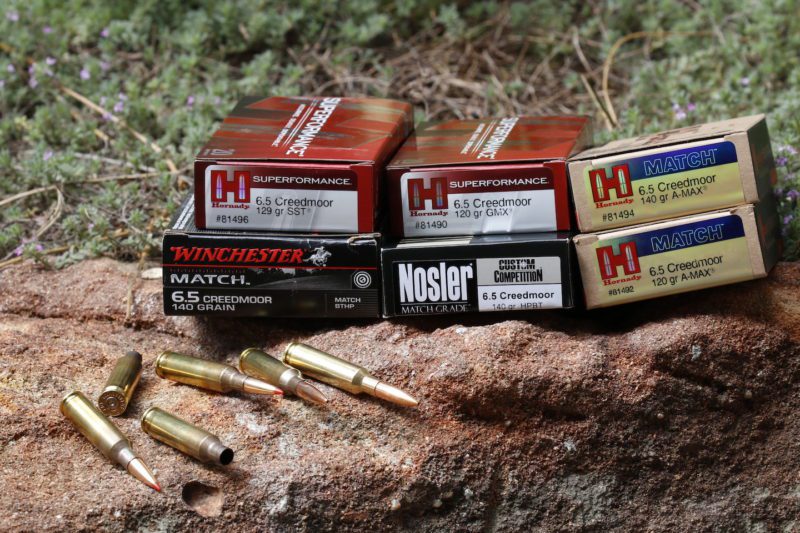
Big, heavy bullets win in this survey, but right now the top selling ammunition in the U.S.A. is the little 6.5 Creedmoor, driven largely by long range target shooters. Hornady created the round, but its popularity soon inspired Winchester, Nosler and most other ammo makers to produce it.
This does not mean either the Swede or Creedmoor is ideal for that work. Yet both do work. And they work at what I consider ridiculous distances. (You didn’t expect those long range shooters skilled at dropping a 142-grain bullet onto a 6-inch target at 1,000 yards to resist trying that on deer and elk, did you?) Ill-advised or not, such long shots began dumping animals where they stood. This inspired many Creedmoor shooters to herald the second coming of the 338 Lapua Magnum — in miniature.
So Are Small Calibers As Effective As Large?
Exactly what percent of these extreme range hits were knockout punches remains undocumented. Released videos do look dramatic, but where did those little pills land? It doesn’t take much energy to kill instantly with a brain or upper spine strike. And how many missed or hit-and-lost videos ever see the light of day? Anecdotal evidence is admitted into this court, but it doesn’t carry much weight. Nor do all hunters buy it. Interest in the rather slow moving 6.5 Creedmoor prompted Nosler to create its much faster 26 Nosler, Weatherby its 6.5-300 Wby. Mag., and even Hornady to unveil its faster 6.5 PRC. Speed still appeals.
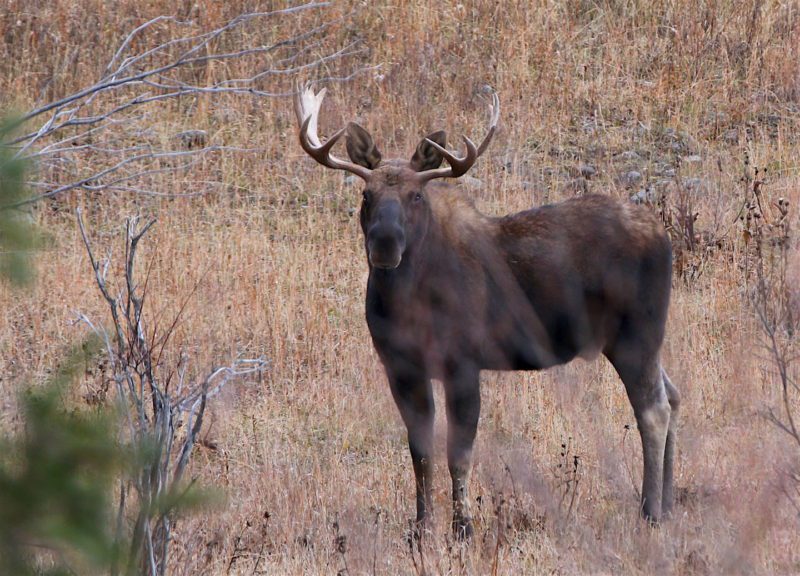
Moose with a 6.5 Creedmoor? Why not? The 6.5×55 Swede with nearly identical ballistics has been bringing Scandinavian moose to table for more than a century. But that doesn’t necessarily mean it’s your best choice. Most readers seem to believe heavy bullets win any matchup against moose-sized game.
Some History Of Velocity (We’ve Been Here Before)
None of this “super 6.5” hype is plowing new ground. We went through the “light and fast” bullet craze starting with the release of the 270 Winchester in 1925 which led to the O’Connor/Keith controversies. (These were two of the most popular gun writers in mid-20th century USA, O’Connor embracing the 270 Win. and Keith disparaging it as perhaps adequate for coyotes at best.) The 270 had been foreshadowed by the 7x57mm Mauser when it chewed up our troops in Cuba in 1898. This forced the U.S. military to abandon not just its slow, heavy 45-70 Govt. cartridge, but also its then new 30-40 Krag with its “light” 220-grain round nose at 2,000 fps MV.
The new baby in the Army arsenal became the 30-06 with a 150-grain spitzer at 2,700 fps. Just nine years later Charles Newton broke the 3,000 fps barrier with his 250-3000 Savage. The velocity craze had begun, and by 1950 Roy Weatherby had it running full throttle. But why?

The light, fast 30-06 gave rise to the 270 Win. which eventually led to the 300 Win. Mag. and 270 WSM as our love affair with speed blossomed. Yet in this survey, at least, wider, heavy bullets win more votes.
Because faster is better. For several reasons, one of which often surprises fans of heavy, slow bullets. First, a fast projectile goes farther. Second, it deflects less in cross winds. Third, lighter bullets recoil less than heavier. Fourth, speed adds power. Lots of power. And that is treading on the sacred ground of heavy bullets.
Slow, Heavy Bullets Win By Misconceptions?
This is the big misconception many have about big, heavy, slower bullets like the 300-grain 45-70 slug. More mass! Hits harder! Anyone can understand that. Would you rather drop a bowling ball on your foot or a golf ball? (Neither, actually.) But this analogy is missing some key parts, the most important a basic natural law known by scientists ever since Sir Isaac Newton’s noggin intercepted a falling apple. (It didn’t really, but makes for a good story.) To wit: double mass and you double kinetic energy. Double velocity and you QUADRUPLE kinetic energy. This is difficult for most of us to accept because we can see and feel mass. Velocity, not so much.
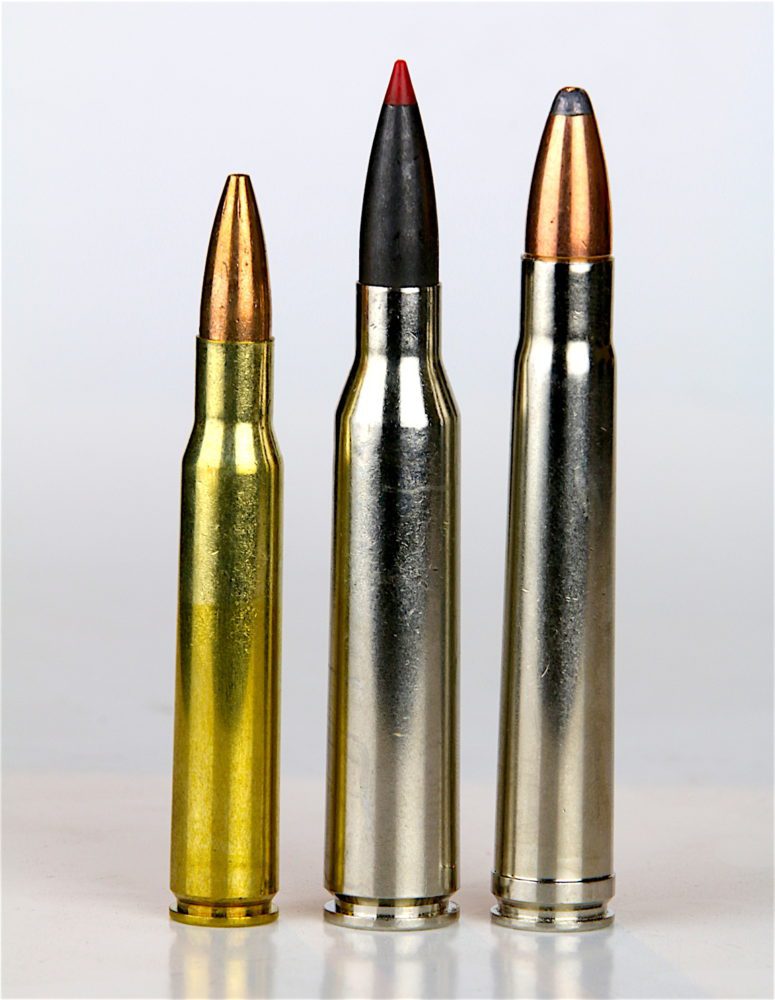
It’s easy to see the inherent “power” of a big bullet atop a large cartridge. Less obvious is the energy advantage of velocity. L. to R. are 30-06, 338 Lapua Magnum, and 375 H&H Magnum.
Many heavy bullet enthusiasts cite momentum as a big advantage of those projectiles. This is part of inertia. It’s harder to stop a 60 mph train than a 60 mph bicycle. True enough, but momentum is mass in motion. Mass times velocity equals momentum. And then we’re back to doubling and quadrupling. We’re simply going to get a lot more kinetic energy in a bullet if we increase it’s velocity rather than it’s weight. It’s a win win arrangement. The lighter bullet goes farther, drifts less, is easier to shoot accurately (less recoil,) and delivers as much energy as a much heavier bullet. But it has to be made of materials and constructed in such a way that it can withstand violent impact energies, stay in one piece, expand to increase wounding area, and retain sufficient inertia (momentum) to penetrate to the vitals.
The Punch Hinges On Form, Too
What we haven’t considered yet is the advantages of form. A sleek, long bullet that hides more of its mass behind its nose retains more kinetic energy than a fatter, more blunt bullet. Inefficient bullet shapes (like flat-nose) handicaps many of our older, classic big bore loads. Look at the ballistics tables below to see how a 45-70 at top speed soon withers while an efficient 270 Win. with half the bullet weight soon overpowers it. Even though the 45-70 starts with 643 f-p more energy, by 100 yards the 270 is carrying 207 f-p MORE energy. At 300 yards it’s twice as much (not that you’d be likely to hit much at 300 yards with that 45-70’s 27″ drop and 26″ wind deflection:
45-70 Govt., 300-grain Nosler BT
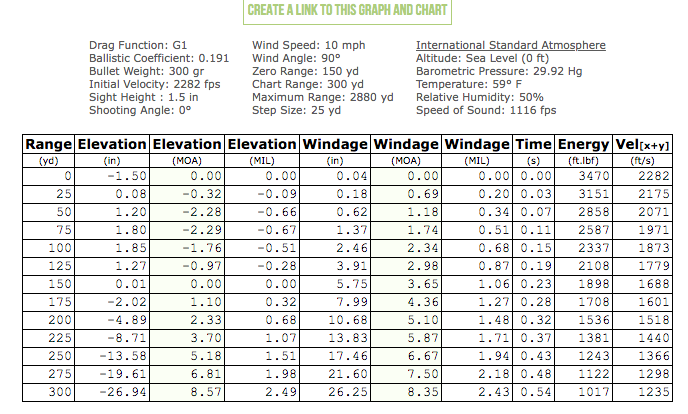
270 Winchester, 150-grain Nosler AccuBond Long Range

Supporters of big, heavy bullets will argue that they don’t need a lot of velocity or energy to penetrate deeply, probably shoot through, and effect a dramatic kill. I grant them that, but I fail to see how a heavy, blunt, low B.C. bullet that loses half its energy at a certain distance downrange can kill faster than a lighter, faster, more efficient bullet that retains twice the energy at the same distance.
Combining Heavy Bullets And Speed For The Biggest Win
Of course, the ultimate solution to this big heavy vs. small light bullet conundrum is to combine larger diameter and mass with increased velocity and aerodynamically efficient bullet shapes. The best of both worlds. But you’d better be certain your bullets have the integrity to stand up to the impact! Not to mention your shoulder.
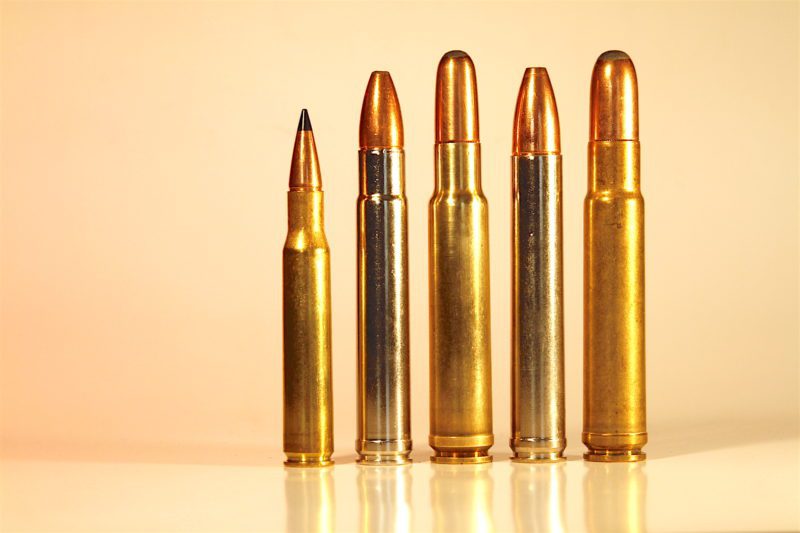
Wide, heavy, massive bullets are an obvious advantage when striking game. But using them involves something called recoil. Many hunters find the kick of the 30-06 on left challenging. Imagine cranking loose the 416 Rem. Mag., 416 Wby. Mag., 458 Lott, or 460 Wby. Mag. on a regular basis.
Survey Says: Heavy Bullets Win
Here are the results from my little survey:
- 178 total votes.
- 104 (58%) chose heavy, larger caliber bullets, especially in heavy cover and at closer ranges.
- 46 chose lighter calibers (sub .308) and speed, especially in open country and longer ranges.
- 28 either didn’t know if they preferred heavy and slow or lighter and faster or they (wisely) tied bullets to species hunted. Heavier and slower for really big game, faster and lighter for smaller game.
I can’t argue with this consensus. It’s common sense. Effective hunting bullets need a balance of mass and velocity combined with materials and construction to match anticipated impact velocities and target construction. But they must be packaged in a cartridge/rifle combination that the hunter can carry to the engagement and then operate efficiently so as to direct the bullet to the proper place. Flinching out of recoil fear negates the advantages of power, velocity, mass, and bullet construction.
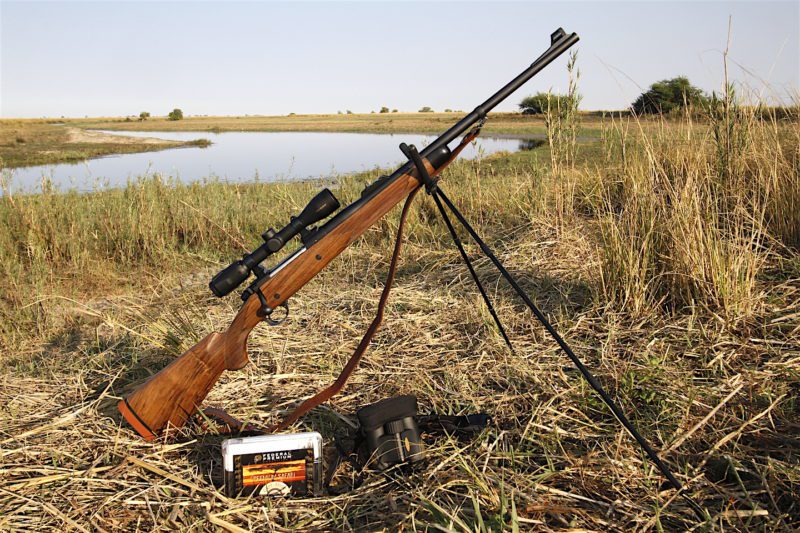
Matching the rifle and cartridge to the terrain and game seems the sensible approach. This is a Kimber Caprivi in 375 H&H Magnum on the flood plains of the Chobe River in the Caprivi Strip, Namibia. It was hired to help procure a rogue hippo for the local village.
Ivory Hunter Didn’t Agree Heavy Bullets Win
I am reminded of John “Pondoro” Taylor’s extensive research and reporting on “knockdown power” in elephant cartridges. Through extensive on-the-ground research, he determined how much energy (bullet size and velocity) was needed to knock down an elephant with a near miss of the brain. It was a lot. But the pachyderm would still recover from the shock and escape if a follow up shot to a vital organ was not administered. To paraphrase a current elephant hunter (I think it was Ivan Carter who told me this) “Miss the brain and it doesn’t matter if you shot a 7mm Mauser or a 700 Nitro Express.”
That 7×57 reference brings us to the oft referenced master ivory hunter of the early 20th century, Scotsman W.D.M. Bell who collected the vast majority of his 1,100 (roughly) elephants with a 7x57mm Mauser and 173-grain bullet. It’s phenomenal knockdown power was the result of perfect placement in the brain.
Bookyourhunt.com Responses
Below are random comments from BookYourHunt.com survey respondents, most of whom were professional guides/outfitters. You can read comments from blog readers here.
“My rule of thumb is bring the largest caliber you are comfortable to shoot. Since we are hunting in the bush I have seen that the larger calibers with heavier bullets do better.”
“There is no substitute for hitting power. ie. power over speed!” (Editor’s note: Here’s an example of some confusion as to what makes power or energy. Speed is an essential part of power.)
There are in some countries in Africa required minimum calibres for certain animals, especially for hard skinned game such as elephant, buffalo, hippo and giraffe. However, the best results come from people who use weapons with which they are very familiar. They shoot more accurately, and it is a well known fact that bullet placement is by far the most important factor.
Being in a big game area all our clients come out on a big game hunt which could be either elephant,buffalo,lion or leopard. On the elephant and buffalo most clients use .375 up to .570 calibres. The bigger the calibre and heavier bullet grains as this also works better in the thick bush . On the plains game mainly .300 calibre which has great velocity.
We are an outfitter in Texas hunting Whitetail deer and some exotics. Our trophy Whitetail weigh up to 220 lbs and some of our Axis bucks will push 250 lbs. A large caliber heavy load is not necessary for these animals. 308, 270, 243 and similar calibers work well. Large calibers can make a good shooter bad as they anticipate the boom too much.
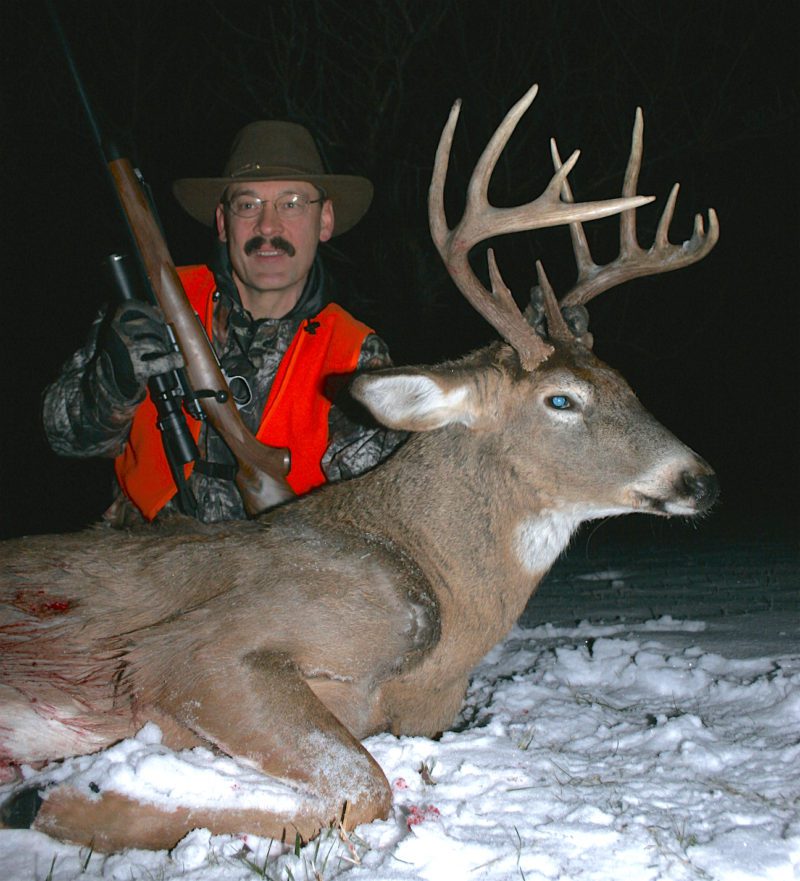
A puny, 80-grain .243 Nosler Ballistic Tip bullet at 3,400 fps had no problem bringing this 250-pound Kansas whitetail to ground. Exit wound seen here.
Clients seem to be more comfortable with the calibers like 30-06, 270 and even 25-06. These are common calibers here in the US and most clients have personnel weapons in them. We find when clients bring the “big guns” they are usually something new that they have bought especially for Africa and are not used to shooting this large a rifle. That means they are a bit intimidated by the recoil and also as the ammo is quite expensive have not really put that much time in the rifle at the range. We would much rather have the client bring the rifle he would take deer hunting and has taken deer hunting for years. Accuracy, Accuracy, Accuracy! Shot placement always trumps raw power.
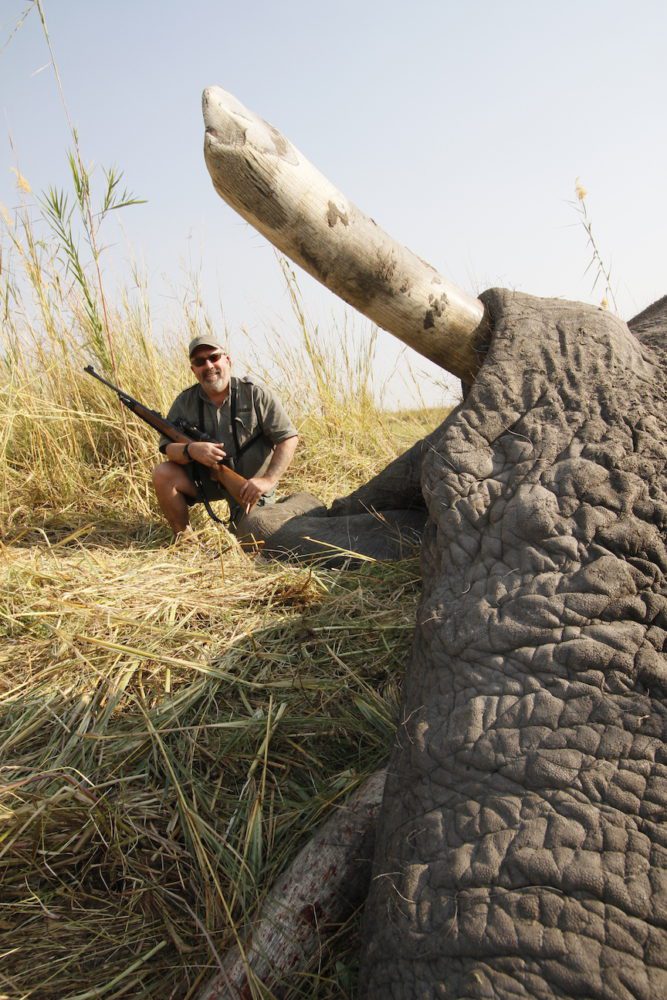
Much of the confusion about “knockdown power” comes from elephant hunter John “Pondoro” Taylor referencing hits on elephants. A near miss of the brain with a bullet carrying enough energy would knock the animal down at least long enough for the hunter to apply a finishing shot. That’s what happened here. The hunter’s first shot with a 458 Win. Mag. just missed the brain, merely stunning the bull. A follow up to the heart finished the job. This was a cull hunt with meat, hide, and tusks going to local villagers who had to live with marauding elephants day-to-day. They told us an elephant in the garden is not the best way to put tomatoes in your salad.
21 yrs. as a lodge owner/10,000 customer shots fired/ 7,100 deer/hog kills-speed+shot placement (shoulder)+correct bullet type=dead animal
Lots having guided elk, deer, bear, and goat hunters for 20 years I prefer lead bullets of heavier weight in magnum caliber. Ultra mags 338 ect have too much recoil for the average hunter. We have found 300 win mag to be the best.
I like the 300 winmag in 180gr barnesX or triple shock. I do recommend chaps bring their favorite deer gun. Load premium rounds in heavier grains. Don’t bring different rounds and grains. This helps with brush and penetration.
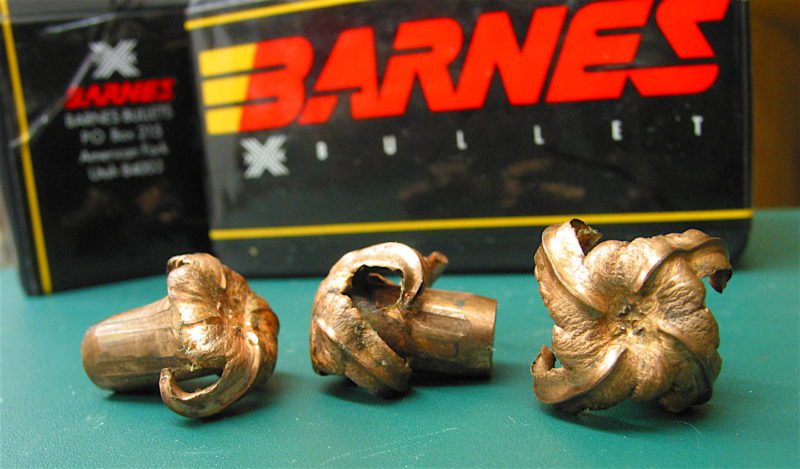
I, too, have found the “stay-in-one-piece” nature of mono-metal bullets like these original Barnes Xs to be most effective for terminating game. The combination of consistent expansion and near total weight retention maximizes hemorrhaging and deep penetration. They usually punch through, leaving good sized exit wounds for blood trailing.
Most important, they should use a weapon that they are familiar & comfortable with shooting. For NW Arctic Alaska, I prefer a .300 WincMag & hand-loaded 200 grain bullets.
This is a very broad question as it will greatly vary from species to species and geographic location. In general my clients lean towards the fast/light combination and as an Outfitter who does not agree with the new long-range hunting craze that North America seems to be caught up in I always recommend a caliber in the .30 CAL range with a premium bonded bullet. Keeping in mind I operate in the mountains of B.C and deal with large, tough game for the most part.
The bigger the better !!!
Depends on the type of hunt. If its african big game than the 375 is the best all rounder.
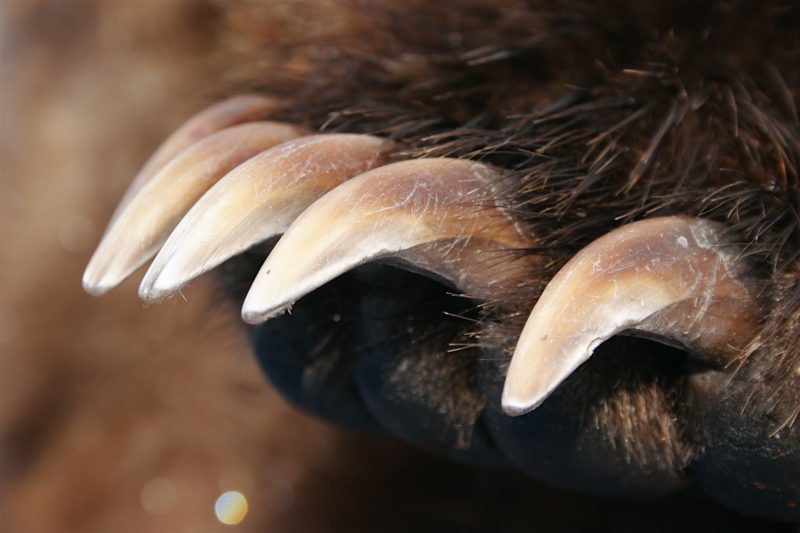
Matching the bullet to the game is the smartest approach to the mass versus speed debate. When teeth and claws are driven by hundreds of pounds of potential fury, you want to meet it with mass AND velocity.
More than 50 years of hunting with cartridges from 22 Short to 458 Lott have informed the author’s opinion that bullet mass, materials, construction AND velocity are all vital components in a confrontation with game — but paramount is placement. Provided you’re shooting a projectile with a bit more integrity than an acetaminophen tablet, precision uber alles.

